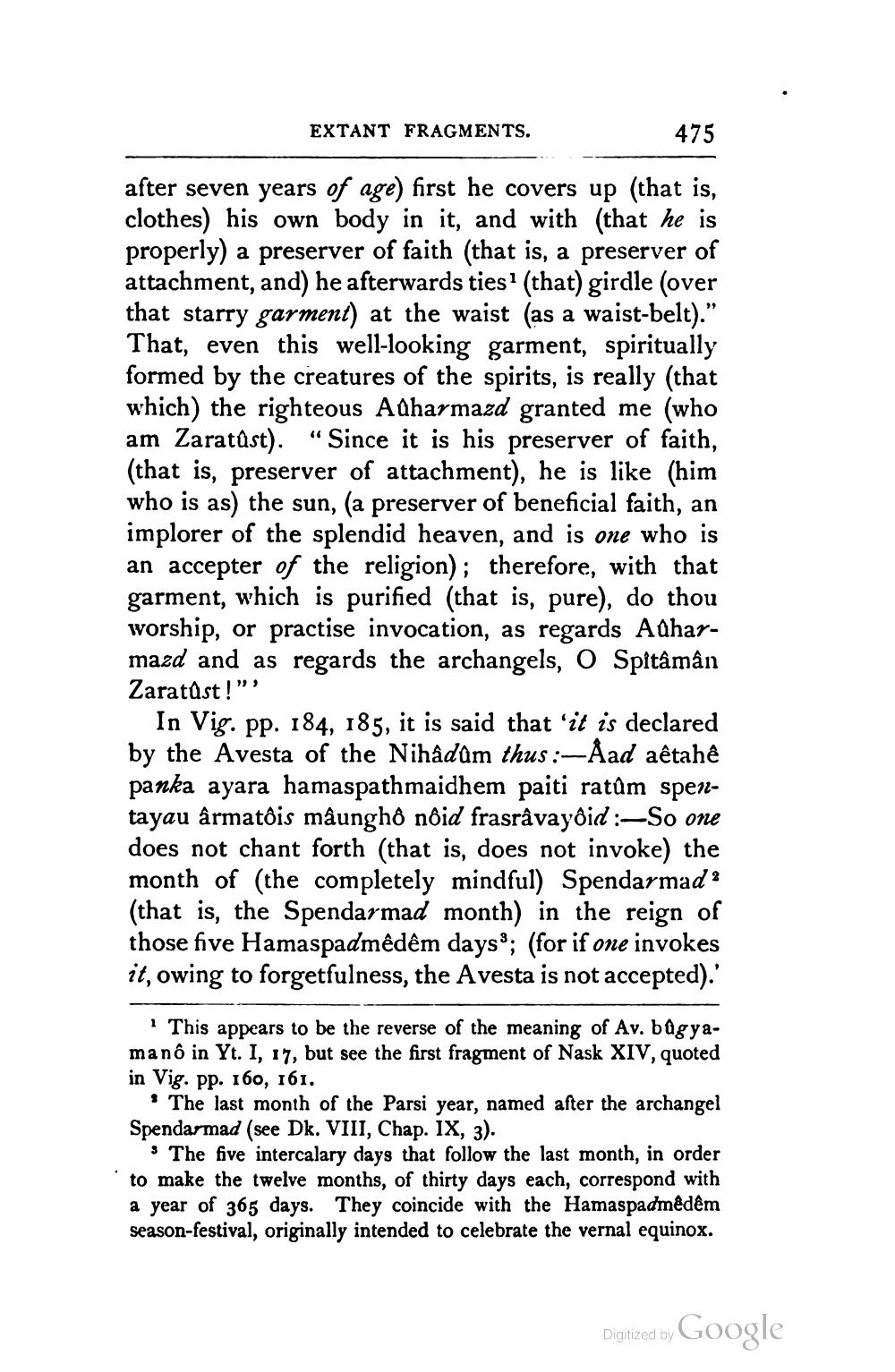________________
EXTANT FRAGMENTS.
475
after seven years of age) first he covers up (that is, clothes) his own body in it, and with (that he is properly) a preserver of faith (that is, a preserver of attachment, and) he afterwards ties? (that) girdle (over that starry garment) at the waist (as a waist-belt).” That, even this well-looking garment, spiritually formed by the creatures of the spirits, is really (that which) the righteous Adharmazd granted me (who am Zaratûst). “Since it is his preserver of faith, (that is, preserver of attachment), he is like him who is as) the sun, (a preserver of beneficial faith, an implorer of the splendid heaven, and is one who is an accepter of the religion); therefore, with that garment, which is purified (that is, pure), do thou worship, or practise invocation, as regards Adharmazd and as regards the archangels, O Spitâmân Zaratust!”.
In Vig. pp. 184, 185, it is said that it is declared by the Avesta of the Nihâdam thus :-Aad aêtahê panka ayara hamaspathmaidhem paiti ratům spentayau ârmatðis mâunghô nóid frasrâvayốid :-So one does not chant forth (that is, does not invoke) the month of (the completely mindful) Spendarmad? (that is, the Spendarmad month) in the reign of those five Hamaspadmêdêm days'; (for if one invokes it, owing to forgetfulness, the Avesta is not accepted).'
This appears to be the reverse of the meaning of Av. būgyamanô in Yt. I, 17, but see the first fragment of Nask XIV, quoted in Vig. pp. 160, 161.
* The last month of the Parsi year, named after the archangel Spendarmad (see Dk. VIII, Chap. IX, 3).
The five intercalary days that follow the last month, in order to make the twelve months, of thirty days each, correspond with a year of 365 days. They coincide with the Hamaspadmêdêm season-festival, originally intended to celebrate the vernal equinox.
Digitized by Google




